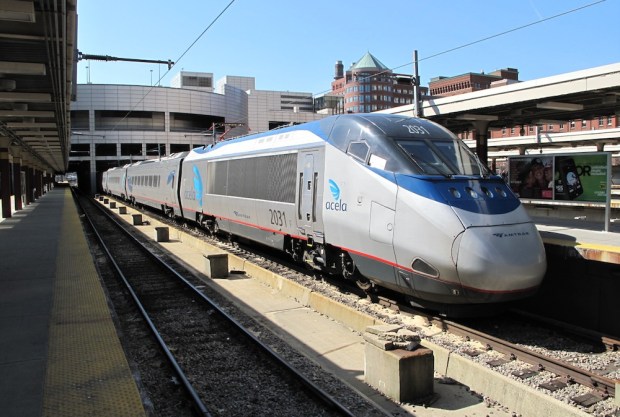The Acela Primary Underway In States Where Businesses Are Struggling

Though the news media seemed initially bent on calling today’s voting events in the Northeast and Mid-Atlantic Super Tuesday III, it quickly became apparent that, even in this wacky election cycle, there is still a finite number of times a superlative can be used before it loses some effect.
Especially if the previous uses have been less than wholly correct. And the last two “Super” Tuesdays didn’t really decide much of anything — except that this particular primary election cycle seems fated to run down to the wire.
Which is not to say it has not been an exciting and dramatic ride. It has been both. It just hasn’t been a particularly cohesive or conclusive one thus far.
And while we at PYMNTS can’t do much for conclusive, we can at least offer something on the cohesive front since we’ve spent this primary following the Main Street businesses that constitute the backbone of the American economy. Wherever the campaigns have gone, we’ve followed. Through the PYMNTS/CAN Capital Store Front Business Index, we’ve been tracking the data on business health and growth in each state and then stacking those results against the regional and national picture. And, when possible, we’ve checked in with merchants on the ground to get a backstage look at what life is like for the merchants on Main Street.
Today’s primaries are named for the Acela — the high-speed(ish) rail line that runs through the heart of the Northeast and connects all of its major and mid-sized cities. Voting in the five-state run today are Connecticut, Delaware, Maryland, Pennsylvania and Rhode Island, and the picture for small and local businesses isn’t fully inspiring. Growth is slow in all of the states we polled today, and the merchants we spoke to were, by far, the most pessimistic to date.
Why so serious?
Well…
Connecticut
Like its neighbors in the tri-state area, results have been mixed in Connecticut — with growth, to be sure, but growth that lagged any number of combinations of metrics in the U.S. at large or the region. The biggest boost here was seen in real wages, which were up 2.3 percent and were the highest-scoring metric, at least for the state.
However, the handful of local business owners we were able to speak to in the state capital of Hartford were less than wholly enthusiastic about the growth of wages, noting that more expensive employees were just one of many factors making it harder to stay in business.
Rising rents in commercial spaces were usually named in conjunction with rising employee costs, as well as overhead in general being on the uptick.
“Just literally keeping the lights on has become more of a margin-eater in recent years,” one restaurant owner noted.
Taxation was also a frequent area of complaint — both in amounts paid and complexity.
Delaware
Only a notch above Rhode Island in terms of size, every metric paled in comparison to its regional and national counterpart, with employment barely breaking even at 0.4 percent growth. That is the most dismal of the data for the state, though it should be noted that the overall index value also failed to break the 1 percent level, even while the larger backdrops (regional and national) were leagues better than that.
Maryland
Maryland has trailed on the majority of metrics, save one, where establishment growth barely outpaced that of the region as a whole but was nonetheless behind the nation. Employment growth, while positive in this arena, at 1.4 percent, was far outpaced by the U.S. as a whole at 3.1 percent and regionally as a benchmark at 2.3 percent.
Pennsylvania
Among the more anemic statewide performances thus far through the second quarter, as calculated by our Store Front Tracker, Pennsylvanians will no doubt have the economy as top of mind as they cast their primary ballots on Tuesday. The overall performance through the time frame was a paltry 0.7 percent, while the nation (using all of the inputs tracked) grew by 3.1 percent. The biggest drag was employment, barely flat at 0.2 percent, while, for example, the region itself was up 2.3 percent on that same metric. With almost no job creation, real wages were barely north of 1 percent, as were establishments.
Rhode Island
The smallest state in the nation, in terms of physical size, posted numbers that could be somewhat charitably called lagging, compared to both the region in which it sits and the nation at large. Taken as a whole, the index for the state grew 1.7 percent, with the overall United States boosting by almost twice that rate, to 3.2 percent. The key drag here seems to be employment growth, where Rhode Island came in at 1.3 percent versus the New England region at 2.3 percent. Both far outpaced by the nation’s 3.1 percent.
